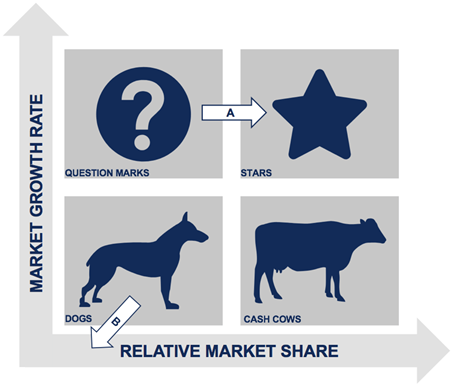Early wins in data and AI are nice, but scaling across the enterprise requires a different approach.
Bright spots are beginning to emerge as organizations take advantage of the transformative capabilities of data and AI: Some 56% of respondents to a recent study from McKinsey reported successful AI adoption in at least one function, an increase from 50% in 2020.
That's great news, right? Well, yes, but now comes the hard part: pivoting to a product management mindset that will effectively scale those functional quick wins to an enterprise level, while establishing what Forrester calls the insights-driven business.
As experience confirms, that is easier said than done.
Signs Your Data and AI Operations Need a New Approach
1. Data and AI outputs don't cross organizational boundaries
Most organizations began their data and AI journeys organically within functional areas, and they continue to operate that way. Greater maturity requires more cross-functional data.
Mature data and AI products tend to use data from outside of functional areas to achieve the greatest insight. Also, reusable components such as customer propensity scores or product-related data pipelines tend to become more prevalent across teams and even at the corporate level.
One global SaaS organization cited its marketing department's having three models in production, delivering significant value for lead generation but not deploying those models or features from the models for any Sales use cases. After some follow-up discussions, the applicability of those models in Sales became clear and, alas, established a missed opportunity to maximize those assets.
2. You have a 'build vs. maintain' dilemma and an over-rotation toward prototypes
Highly skilled technical resources tend to prioritize "new build" over "maintain," and they often lack enterprise-level prioritization mechanisms that will optimize value for the organization over time. Solid data ops and model ops processes can help overcome that challenge, though building that muscle can take time. New resources with a different focus may be required to balance out the two ends of the spectrum between prototypes and AI.
3. Redundant and/or highly overlapping AI models have proliferated across the enterprise
Although data and model catalogues go a long way toward creating greater visibility into what exists today, those tools don't go far enough to help reconcile and establish reusable components that benefit the entire enterprise.
A standard process that considers and rationalizes the greater enterprise needs is a common pain point for organizations that are starting to see results from their investments in data and AI.
4. There is a lack of clarity around enterprise ownership of data and AI products
Although data governance councils and individual people focus on data quality and establishing much-needed controls, confusion remains around ownership of outputs and the investment strategies into those outputs.
The generally broader purview of CIOs and CDOs means those leaders are well-positioned to drive change in the area but lack the skill sets in their teams and/or a framework to really take the bull by the horns.
Product Management: Bridging the Gap Between Operations and Enterprise Priorities
Once an organization has established its data ops and AI model ops capabilities, it needs to start thinking strategically about those organizational assets as products.
Forrester defines a data product as "a component that ingests and delivers data used by an insight solution for decisions and actions." That encompasses outputs from both data ops and AI model ops practices.
Organizations that embrace a product management mindset while applying tried-and-true product management principles to those valuable assets will benefit from greater returns on their investments, maximize the technical resources they have available to them, and rapidly outpace their peers.
To clarify, product management principles effectively...
- Provide a strategic lens into the business. Shared service functions are quite common in medium and large enterprises; however, the pivot to product management places the spotlight on the outputs of those services while providing a much-needed ability to manage information requests. The goal is to ensure data and AI services obtain maximum alignment to the business through the concept of products.
- Connect teams in ways that cut across organizational boundaries. The cross-functional mindset that products generate quickly leads to inventories of assets and reusability. Those, in turn, benefit the entire enterprise—not just single functional groups—while enabling more advanced outputs. Often, those connections are not natural ways of working without a unifying framework such as a product.
- Facilitate a consistent and standard prioritization mechanism. Today, so many organizations experience dramatically different maturity levels of insight-driven-ness across functional areas. Companies that successfully align those pieces to form an advanced insights-driven company are 8.5 times more likely to report at least 20% year-over-year revenue growth. Even if limited resources are available, product management can facilitate decisions to ramp up certain products that can more evenly distribute insight wealth or focus in specific areas that require more attention.
Activating a Product Management Strategy
To fully realize the benefits of a product management approach layered on top of data and model ops, take the following steps.
1. Use the Boston Consulting Group growth-share matrix
First introduced in 1968 by Bruce D. Henderson, this analytical tool has been an important planning instrument in brand marketing, product management, strategic management, and portfolio analysis at top companies for decades.
Plotting data and AI products on this matrix illuminates the outputs from service teams and facilitates the right discussions with leadership.

Source: Corporate Finance Institute
One technology client added a review of each functional group's growth-share matrix as part of its quarterly business reviews. That drove critical "dot-connecting" conversations that helped everyone align on priorities and resource management at an enterprise level.
2. Invest in a product catalog with supporting road maps
Once the growth-share view has become available, the logical next step consists of ensuring that the products are searchable and their near-term investment plans are available through road maps.
Simple and engaging road maps provide a perspective on timing and bring products to life in actionable ways. They should become key inputs to annual and quarterly planning exercises.
3. Establish a product management training plan
Many local university business schools offer product management training courses of all sizes and shapes. Instilling such a mindset takes time and commitment at all levels of the organization. A formal training program signals commitment to the approach from leadership and provides employees with the skills they need to succeed with the framework.
4. Use the internal product suite as an incubator for external data products
In the digital age, many organizations find new business opportunities in the internal products they create and use internally. Don't let opportunities to monetize data and AI products slip through your hands while you are heads-down running the business. Innovative CIOs and CDOs are often best positioned to drive those types of transformations, which can help the business scale and establish durable competitive advantages.
* * *
As AI's use in business becomes more common, the requirements to scale the technology are becoming more apparent. To avoid a plateau filled with expensive prototypes and initiatives that fall short of their full potential, embrace the core tenets of product management.
After all, the fundamental ideas behind managing products have served countless successful brands well for decades, and will continue to do so for decades more.
More Resources on Product Management
How to Maximize Your Digital B2B Marketing Strategy With PIM
The Challenges That Product Experience Management (PXM) Can Solve




